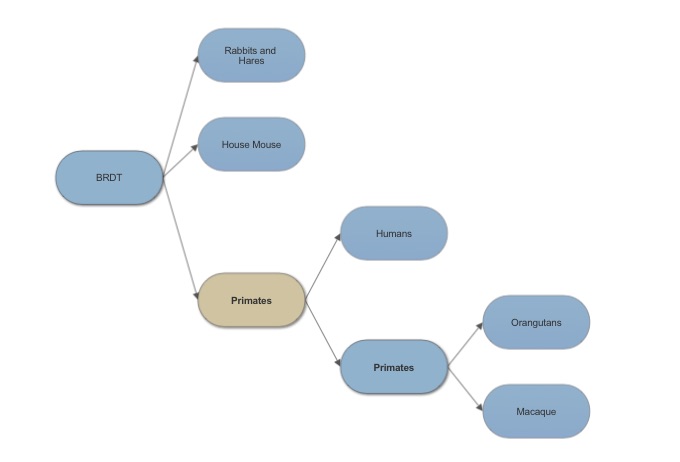User:Elisha Lacey/Sandbox 1
From Proteopedia
(Difference between revisions)
| Line 8: | Line 8: | ||
Loss of one of the bromodomains or even single point mutations leads to decrease spermatogenesis and defective sperm. If both bromodomains are knocked out it leads to loss of fertility. | Loss of one of the bromodomains or even single point mutations leads to decrease spermatogenesis and defective sperm. If both bromodomains are knocked out it leads to loss of fertility. | ||
== Relevance == | == Relevance == | ||
| - | Male contraception has been eluding scientists for years and is a desired area to prevent unplanned pregnancies. In studies of an anti-cancer drug triazolotheinodiaepine known as JQ1 that inhibits BRD4 in cancer pathogenesis. In experiments in mice it is seen, due to structural similarities, JQ1 blocks the production of sperm in testes. The binding of JQ1 in the acetyl-lysine pocket prevents recognition of acetylated histone H4KAC4. JQ1 in studies is not seen to affect hormone levels(leutinizing hormone. follicle stimulating hormone, testosterone), mating behaviors or harmful effects to eventual offspring. Also JQ1 is not seen to cause sterility in mice. The effects of JQ1 on fertility are reversible and dose and time dependent effects on fertility. In mice it reduces size of testis, seminiferous tubes, and number of spermatozoa as well as the mobility of spermatozoa. | + | Male contraception has been eluding scientists for years and is a desired area to prevent unplanned pregnancies. An epigenetic target is ideal to prevent sterility. In studies of an anti-cancer drug triazolotheinodiaepine known as JQ1 that inhibits BRD4 in cancer pathogenesis. In experiments in mice it is seen, due to structural similarities, JQ1 blocks the production of sperm in testes. The binding of JQ1 in the acetyl-lysine pocket prevents recognition of acetylated histone H4KAC4. JQ1 in studies is not seen to affect hormone levels(leutinizing hormone. follicle stimulating hormone, testosterone), mating behaviors or harmful effects to eventual offspring. Also JQ1 is not seen to cause sterility in mice. The effects of JQ1 on fertility are reversible and dose and time dependent effects on fertility. In mice it reduces size of testis, seminiferous tubes, and number of spermatozoa as well as the mobility of spermatozoa. |
[[Image:JQ1 strucutre.jpg]] | [[Image:JQ1 strucutre.jpg]] | ||
==Analysis of Structure == | ==Analysis of Structure == | ||
| Line 14: | Line 14: | ||
[[Image:topology.jpg]] | [[Image:topology.jpg]] | ||
==Analysis of related Sequences== | ==Analysis of related Sequences== | ||
| - | Bromodomain testis specific shares | + | Bromodomain testis specific shares 97% sequence similarity to that of bromodomain containing protein for that of zebrafish. |
==Evolution of BRDT== | ==Evolution of BRDT== | ||
[[Image:BRDT tree.jpg]] | [[Image:BRDT tree.jpg]] | ||
Revision as of 10:57, 10 December 2015
Bromodomain testis specific
| |||||||||||
References
Berkovits B, Wolgemuth D. The first bromodomain of the testis-specific double bromodomain protein Brdt is required for chromocenter organization that is modulated by genetic background. PMC. 2011 Dec 15: 360 (2):358-368.
Barda S, Yogev L, Paz G, et al. BRDT gene sequence in human testicular pathologies and the implication of its single nucleotide polymorphism (rs3088232) on fertility. Andrology. 2014 May 28; 2(4): 641-647.
Zdrojewicz Z, Konieczyn R, Papier P, Szten F.Brdt Bromodomains Inhibitors and Other Modern Means of Male Contraception. ACEM. 2015 Feb 23; 24(4):705-714.


